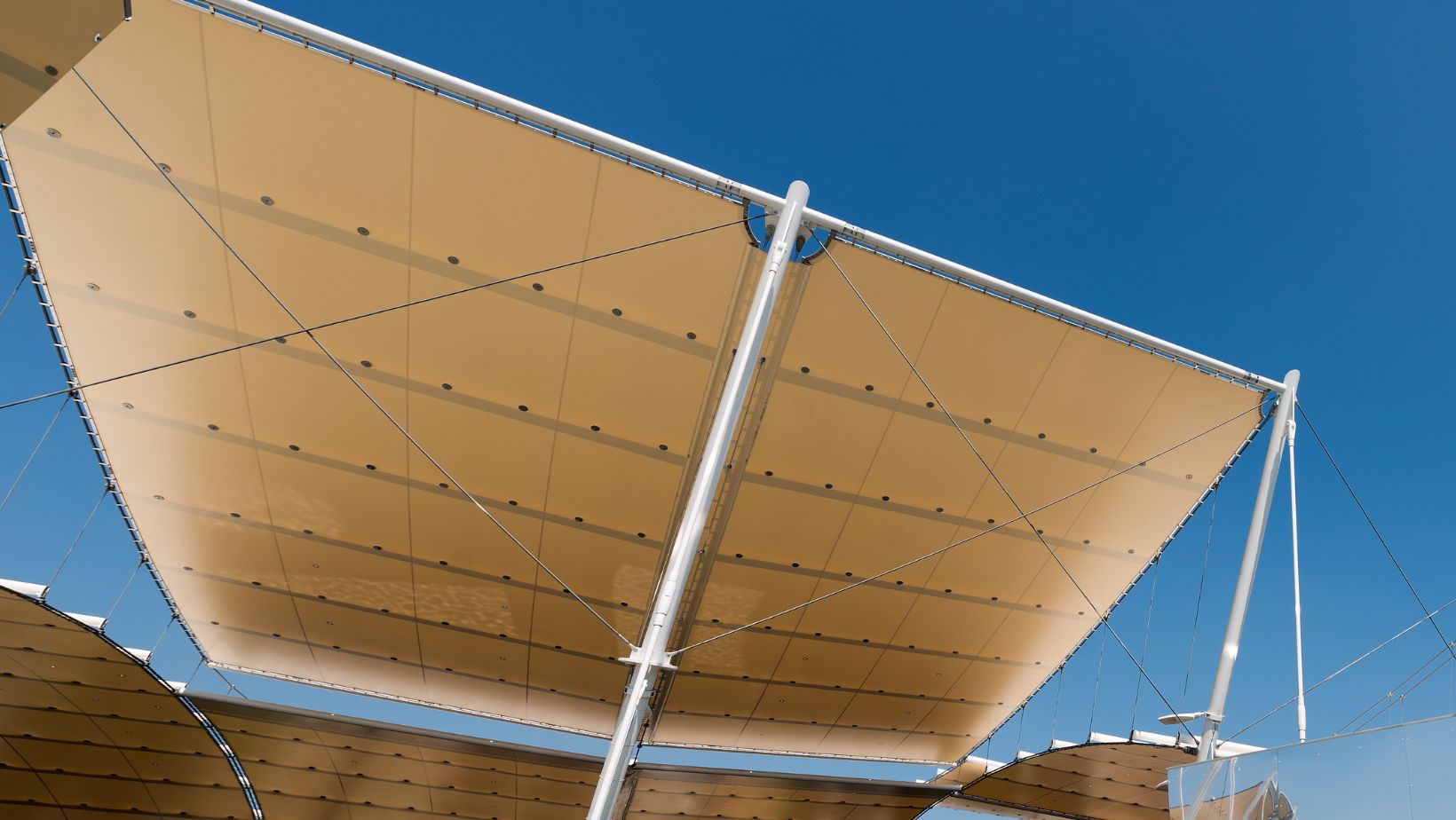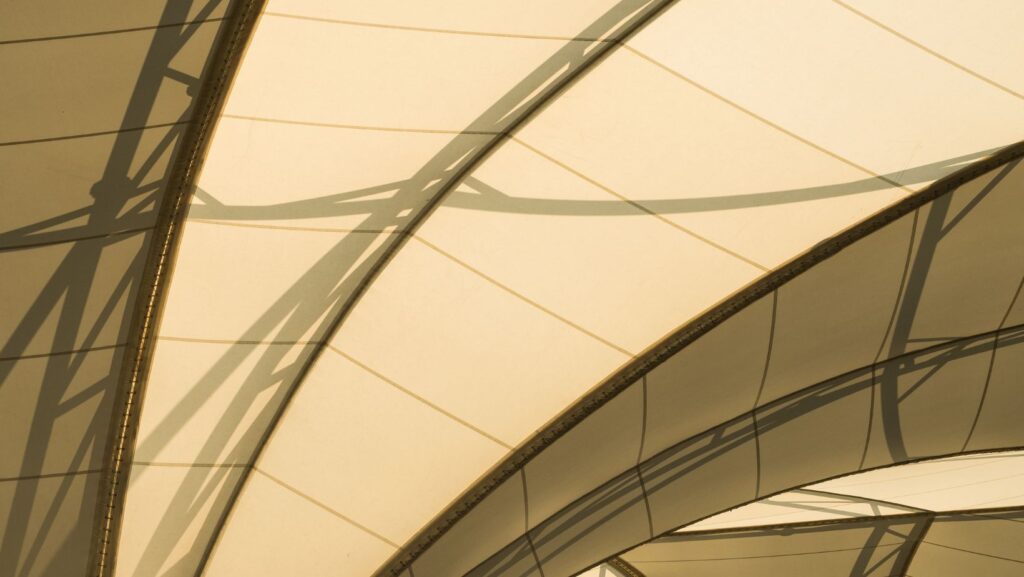In today’s fast-paced and competitive market, brands are always looking for ways to stand out. One effective method is through the use of tension fabric structures. These innovative designs not only enhance aesthetic appeal but also serve as powerful branding tools. In this article, we will explore how tension fabric structures can maximize branding opportunities for businesses of all sizes.
Understanding Tension Fabric Structures
Tension fabric structures are architectural forms that utilize stretched fabric as a primary element. They are lightweight yet strong, allowing for unique shapes and designs that can capture attention. Made from durable materials like polyester or PVC, these structures can be used in various applications, from event spaces to permanent installations. Their versatility makes them a favorite choice for brands looking to create memorable visual experiences.
The Visual Impact of Tension Fabric Structures
The first aspect to consider is the visual impact of tension fabric structures. Their unique shapes and vibrant colors can draw in potential customers. Whether used at a trade show, festival or as part of a permanent installation, these structures create a striking visual presence.
Imagine walking into a crowded trade show where dozens of booths compete for attention. A brand that has a beautifully designed tension fabric structure will stand out among traditional booths. The fluid lines and dynamic forms of these structures can create an inviting atmosphere, encouraging visitors to engage with the brand. By utilizing large, high-resolution graphics printed on the fabric, businesses can showcase their branding effectively, making a lasting impression on attendees.
Versatility in Branding
Another significant advantage of tension fabric structures is their versatility. They can be used in various settings, including outdoor festivals, corporate events, retail spaces, and even museums. This adaptability allows brands to tailor their presence to specific audiences and environments.
For instance, a company participating in an outdoor music festival can use a tension fabric structure as a shade and branding element. The structure can feature bright graphics that reflect the brand’s identity while providing comfort for festival-goers. Similarly, a retail store can use these structures for seasonal displays, creating eye-catching presentations that can change with consumer trends.
Creating an Immersive Experience
Tension fabric structures can also contribute to creating immersive experiences. In today’s marketing landscape, brands need to engage customers in meaningful ways. Tension fabric structures can help achieve this by providing a unique environment that encourages interaction.
For example, an event that features a tension fabric structure can incorporate interactive elements such as touchscreens, product samples, or even live demonstrations. This kind of engagement helps consumers connect with the brand on a deeper level. When people physically interact with a brand, they are more likely to remember it later.
Cost-Effectiveness and Portability
Another reason brands choose tension fabric structures is their cost-effectiveness and portability. Compared to traditional building materials, tension fabric is often more affordable. Additionally, these structures are lightweight and easy to transport, making them ideal for companies that attend multiple events throughout the year.

Brands can invest in a high-quality tension fabric structure that can be reused for various occasions. This sustainability not only saves money but also reflects positively on the brand’s commitment to the environment. Consumers are increasingly conscious of sustainability issues, so utilizing eco-friendly materials can enhance a brand’s image.
Customization Opportunities
Customization is crucial in branding. Tension fabric structures offer various customization options, allowing brands to tailor their designs to match their identity. From size and shape to graphics and colors, the possibilities are endless.
For example, a tech company might choose a sleek, modern tension fabric structure in shades of blue and silver, reflecting its brand colors. The structure can feature logos, slogans, and other design elements that reinforce brand messaging. This level of customization ensures that the structure resonates with the target audience while enhancing brand recognition.
Enhancing Brand Recall
Brand recall is essential in a crowded marketplace. Tension fabric structures can significantly enhance brand recall through their striking visuals and memorable designs. When people encounter a well-designed structure, it creates a positive association with the brand.
Studies have shown that visual elements play a crucial role in memory retention. By incorporating eye-catching graphics and dynamic forms into their marketing strategy, brands can increase the likelihood that consumers will remember them long after an event. This is especially true for brands that consistently use tension fabric structures across multiple platforms, creating a cohesive brand experience.
Building a Unique Brand Identity
In addition to enhancing recall, tension fabric structures can help build a unique brand identity. Brands need to differentiate themselves from competitors, and a distinctive structure can do just that.
Consider a restaurant that uses a tension fabric structure to create an outdoor dining area. The structure can be designed to reflect the restaurant’s theme or cuisine, setting it apart from nearby eateries. This uniqueness not only attracts customers but also encourages them to share their experiences on social media, further amplifying the brand’s reach.
Creating a Memorable Event Experience
Events are significant opportunities for brands to connect with their audiences. Tension fabric structures can elevate the overall experience, making it more memorable.
Imagine attending a product launch where the venue features an impressive tension fabric structure as the backdrop. The structure can be adorned with lighting effects and graphics that change throughout the event, creating an engaging atmosphere. This type of environment encourages attendees to take photos and share them on social media, extending the brand’s exposure beyond the event itself.
Strategic Placement for Maximum Visibility
The placement of tension fabric structures is also crucial for maximizing branding opportunities. Strategic placement ensures that the structures are seen by as many people as possible.

For outdoor events, positioning the structure near high-traffic areas can attract more attention. In indoor settings, placing the structure near entrances or key pathways can create visibility and foot traffic. By considering the flow of movement and visibility, brands can ensure that their tension fabric structures make a significant impact.
Utilizing Technology to Enhance Engagement
Incorporating technology into tension fabric structures can further enhance branding opportunities. For example, brands can integrate interactive screens that allow attendees to learn more about products or services.
Augmented reality (AR) experiences can also be implemented, allowing visitors to interact with the brand in innovative ways. These technology integrations create a modern, engaging atmosphere that resonates with tech-savvy consumers. By utilizing the latest technologies, brands can position themselves as industry leaders.
Leveraging Social Media for Brand Exposure
In the age of social media, visual content is king. Tension fabric structures provide excellent opportunities for brands to create shareable content.
Brands can encourage attendees to take photos with the structure as a backdrop, often featuring unique hashtags or branding elements. When users share their experiences online, they expand the brand’s reach and visibility. This organic exposure can lead to increased interest and engagement, ultimately driving sales.
Creating Lasting Partnerships
Tension fabric structures can also foster partnerships with other brands. For example, two complementary brands can collaborate on a tension fabric structure that represents both identities. This not only maximizes branding opportunities for both companies but also enhances the overall experience for attendees.
These partnerships can create a buzz around an event, drawing in larger crowds. Collaborative branding efforts can lead to greater awareness and engagement, ultimately benefiting all parties involved.
Conclusion
In conclusion, tension fabric structures are powerful tools for maximizing branding opportunities. Their unique visual impact, versatility, and potential for customization make them ideal for businesses looking to enhance their marketing strategies. By leveraging these structures, brands can create immersive experiences that engage consumers and foster meaningful connections.
As businesses continue to navigate a competitive landscape, incorporating tension fabric structures into their branding efforts can provide a significant advantage. With the ability to create memorable events, enhance brand recall, and utilize technology for engagement, the opportunities are endless. Brands that embrace tension fabric structures will undoubtedly find themselves standing out in the crowded marketplace, capturing the attention and loyalty of their target audiences.
